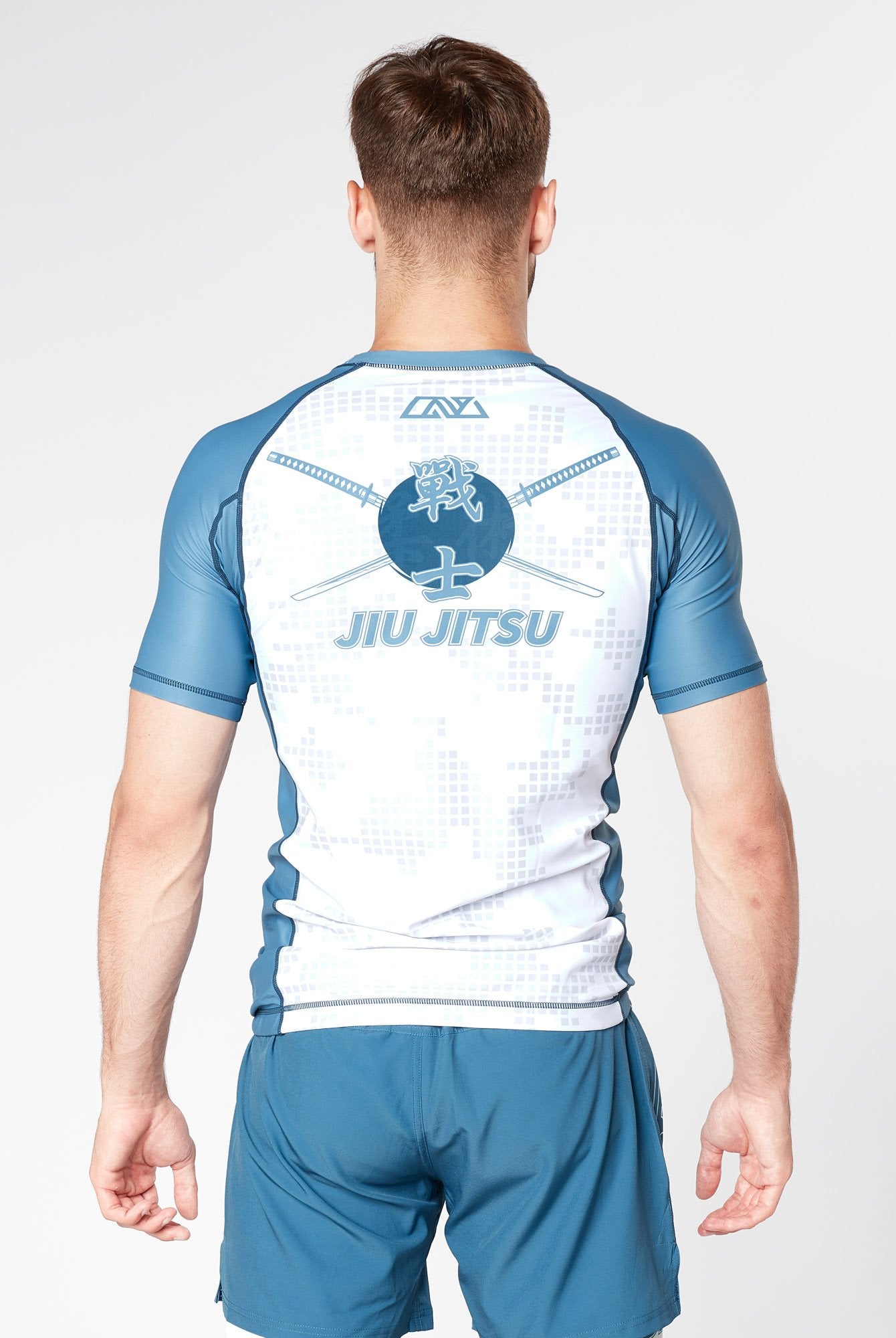Examining the Risks and Rewards of Brazilian Jiu-Jitsu

Brazilian Jiu-Jitsu (BJJ) attracts practitioners with its promise of self-improvement and physical fitness. It requires rigorous training and often leads to injuries, which raises a critical question: Is the practice truly worth the risks involved? Many find the benefits, such as increased confidence, camaraderie, and mental discipline, outweigh the likelihood of injuries.
While injuries are a reality in BJJ, they are often manageable and may even foster resilience. Practitioners learn to recognize physical limits and build a deeper understanding of their bodies. Those who engage fully in the sport often report significant gains in personal and athletic development despite the challenges.
Ultimately, the decision to participate in BJJ hinges on individual goals and tolerance for injury. For many, the enriching experiences and skills gained through training justify the potential risks, making BJJ an appealing choice in the martial arts landscape.
Understanding BJJ and Injury Risks
Brazilian Jiu-Jitsu (BJJ) involves various techniques that can lead to injuries. Being aware of the specific types of injuries and comparing their rates to other martial arts can provide perspective for practitioners considering the risks involved.
Types of Injuries in Brazilian Jiu-Jitsu
Injuries in BJJ can range from mild to severe. Some common injuries include:
- Joint injuries: These often occur due to submissions that place undue stress on joints, particularly the knees and shoulders.
- Sprains and strains: Overexertion or awkward falls can lead to muscle and ligament injuries.
- Skin infections: Close contact during training increases the risk of skin conditions like ringworm and staph infections.
In addition to these, fractures and concussions, though less common, can occur during intense rolling sessions. Understanding the frequency and nature of these injuries is crucial for practitioners to implement preventive measures.
Comparing Injury Rates: BJJ vs. Other Martial Arts
Research indicates that BJJ has a distinct injury profile compared to other martial arts. While contact sports inherently carry risks, studies suggest that BJJ's injury rates are comparable to those of judo and wrestling.
- Injury prevalence: BJJ tends to have lower rates of severe injuries compared to striking arts like boxing or Muay Thai.
- Training practices: The emphasis on technique over brute force in BJJ may mitigate some injury risks.
Practitioners should be mindful that individual experiences may vary significantly. Using appropriate safety measures, such as tapping out early during submissions and wearing protective gear, can help reduce the likelihood of injury.
Analyzing the Benefits of BJJ Training
Brazilian Jiu-Jitsu (BJJ) offers significant advantages that extend beyond its physical combat aspects. Individuals who train in BJJ experience improvements in both physical and mental health as well as gains in self-defense capabilities.
Physical and Mental Health Advantages
Training in BJJ promotes numerous physical health benefits. It enhances cardiovascular endurance, flexibility, strength, and coordination. Engaging in regular practice can lead to weight loss and improved muscle tone.
Furthermore, BJJ is known for its positive impact on mental health. The physical exertion during classes promotes the release of endorphins, which can reduce stress and anxiety. Practitioners often report improved focus, discipline, and a sense of achievement from mastering techniques and overcoming challenges on the mat.
Self-Defense and Personal Safety Skills
BJJ equips practitioners with effective self-defense skills applicable in real-life scenarios. Its techniques emphasize leverage and technique over brute strength, allowing individuals to defend themselves against larger opponents.
The training focuses on grappling, escaping holds, and controlling situations, making it practical for self-protection. Understanding ground-fighting mechanics also increases situational awareness. As individuals gain confidence in their abilities, they often feel empowered, contributing to a greater sense of personal safety in various environments.
Preventive Strategies to Reduce Injury
Implementing strategies to prevent injuries is essential for practitioners of Brazilian Jiu-Jitsu (BJJ). By focusing on warm-up routines, managing training intensity, and utilizing proper equipment, athletes can reduce their risk of injury while enhancing their performance.
Proper Warm-Up and Cool-Down Routines
A systematic warm-up increases blood flow, improves flexibility, and prepares the body for the physical demands of BJJ. Effective warm-up routines should include dynamic stretches, light aerobic activities, and sport-specific movements. These elements help prepare joints and muscles for the stresses of rolling and sparring.
Cool-down routines are equally important. They assist in gradual recovery and reduce muscle soreness. Athletes should incorporate static stretches and deep breathing exercises to aid in recovery. Consistent warm-up and cool-down practices promote overall mobility and can reduce the risk of injuries significantly.
Training Intensity and Listening to Your Body
Training intensity plays a critical role in injury prevention. Athletes are encouraged to avoid training at maximum capacity every session. Instead, they should focus on varying their intensity levels, allowing the body time to recover and adapt.
Listening to one's body is vital. If fatigue or discomfort occurs, it may be necessary to scale back or take a break. Acknowledging signs of overexertion can prevent injuries before they occur. Implementing rest days and recovery periods into training schedules enhances long-term performance and health.
The Role of Equipment and Safety Gear
Proper equipment and safety gear significantly mitigate injury risks. Athletes should invest in high-quality mats to ensure safe training environments, as these provide cushioning and decrease the likelihood of falls resulting in injuries.
Additionally, wearing mouthguards, knee pads, and rash guards can protect against impacts and skin abrasions. While gear cannot eliminate risk entirely, it substantially decreases the potential for injury during practice and competition. Regular checks on equipment for wear and tear ensure maximum safety throughout training sessions.
Recovery and Dealing With Injuries
Injuries in Brazilian Jiu-Jitsu (BJJ) are common, but effective treatment and recovery strategies can significantly mitigate their impact. Understanding how to manage injuries is crucial for athletes who wish to continue training safely.
Treatment of Common BJJ Injuries
Common injuries in BJJ include strains, sprains, and joint injuries. Treatment typically involves the R.I.C.E. method: Rest, Ice, Compression, and Elevation.
- Rest: Essential for healing, avoiding further strain on the injured area is vital.
- Ice: Applying ice can reduce swelling and numb pain. It should be done for 15-20 minutes several times a day.
- Compression: Using a bandage can help manage swelling.
- Elevation: Keeping the injured limb elevated reduces swelling and assists in recovery.
For more severe injuries, medical evaluation is necessary. Physical therapy may also be recommended to rebuild strength and function.
Importance of Rest and Rehabilitation
Rest is a fundamental aspect of injury recovery. It allows the body to heal and prevents aggravating existing injuries. Resuming training too soon can lead to chronic issues.
Rehabilitation is equally critical. A tailored rehabilitation program can expedite recovery while ensuring a safe return to training. Stretching and strengthening exercises improve joint stability and flexibility.
Additionally, maintaining communication with healthcare professionals is important. They can offer guidance on when to resume training and suggest appropriate modifications to prevent future injuries. Balancing rest with rehabilitation optimizes recovery while preparing the athlete for a successful return to BJJ.
Making the Decision: Is BJJ Right for You?
Choosing to practice Brazilian Jiu-Jitsu (BJJ) requires careful consideration. Participants should assess their goals and physical condition before starting.
Key Factors to Consider:
- Goals: Is the objective fitness, self-defense, or competition? Each goal can dictate training intensity and commitment level.
- Physical Fitness: Assess current fitness levels. BJJ can be physically demanding, and a baseline of fitness can enhance the experience and safety.
- Injury History: Consider any previous injuries. BJJ carries inherent risks, and prior injuries may affect training choices.
Personal Preferences:
- Training Environment: Many prefer a supportive atmosphere, while others thrive in a more competitive setting.
- Instructor's Style: The chance to connect with an instructor can influence one’s training journey. Their approach to teaching may align more closely with some individuals’ learning preferences.
Time Commitment:
- Training Frequency: BJJ requires regular practice to build skills. Analyze how much time can realistically be dedicated each week.
- Lifestyle Integration: Consider how BJJ fits into daily routines. It should enhance life rather than complicate it.
Making this decision involves evaluating motivation, personal circumstances, and long-term goals. Each individual's journey in BJJ is unique and should align with their values and priorities.












































































































